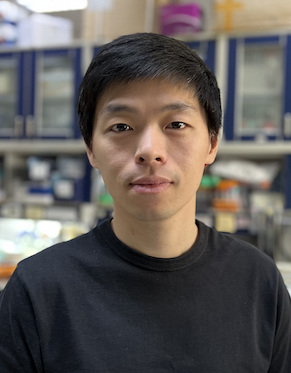林睿博士
- 基本信息
- 教育經歷
- 工作經歷
- 研究概述
- 發表文章

林睿 博士 研究員Rui Lin, Ph.D.Assistant Investigator, NIBS, BeijingEmail: linrui@nibs.ac.cnHome page: https://linlab.bio
教育經歷 Education
2018 博士,北京大學、清華大學和北京生命科學研究所聯合培養博士研究生項目
PhD, Peking University-Tsinghua University-National Institute Biological Sciences (PTN) Joint Graduate Program
2012 學士, 廈門大學
B.S., Xiamen University, China
工作經歷 Professional Experience
2022.6- 研究員,北京生命科學研究所
2022.6- Assistant Investigator, National Institute Biological Sciences,
Beijing
2018.8-2022.5 博士后,北京生命科學研究所
Postdoctoral
Research Fellow, National
Institute Biological Sciences, Beijing
研究概述 Research Description
小膠質細胞是中樞神經系統中最主要的常駐免疫細胞。作為一種特殊的巨噬細胞,小膠質細胞廣泛分布在中樞神經系統中。處于靜息狀態的小膠質細胞持續監測周圍環境,當遭遇如細胞損傷、炎癥相關分子等刺激時,小膠質細胞進入多種激活狀態,并通過吞噬、遷移、細胞因子釋放等多種方式進行響應和修復。在發揮免疫功能之外,小膠質細胞也廣泛參與神經環路的調控,對神經環路發育以及突觸可塑性等都至關重要。小膠質細胞功能異常是引起神經系統衰老和神經系統疾病的重要因素。例如,近期人類遺傳學研究發現,絕大多數神經退行性疾病的易感基因都在小膠質細胞中特異性表達。因此,小膠質細胞是治療中樞系統疾病的重要靶點。我們實驗室通過開發針對小膠質細胞的新技術,全面研究在正常生理狀態和疾病模型中小膠質細胞增殖、死亡和細胞密度維持的動態調節機制,并在此基礎之上探索基于小膠質細胞的基因和細胞療法。同時,我們也致力于其他神經科學領域的新技術開發。
As the resident macrophages, microglia account for about 10% of the total cell population in the central nervous system (CNS). Microglia conduct active surveillance, and initiate rapid innate and adaptive immune responses upon encountering immune assaults. Beyond their functions in immunity, microglia have multifaceted roles in controlling neural circuit development and plasticity. Microglial dysfunction is a key factor in CNS ageing and in the progression of CNS diseases including neurodegenerative disorders and brain cancers. Clinical studies have identified risk-associated alterations in genes that are highly expressed in microglia, highlighting the engagement of microglia in CNS disease progression and the potential for targeting microglia for therapeutic interventions. By developing new molecular and genomic tools, our lab studies the microglia population dynamics under normal physiological conditions and in disease models. We are also interested in developing microglia-based therapies and neurotechnologies for broad neuroscience fields.
發表文章 Publications
(# corresponding author, * co-first author)
Key research papers:
1. Lin, R.*#, Zhou, Y.*, Yan, T.*, Wang, R.*, Li, H., Wu, Z., Zhang, X, Zhou, X, F., Zhang, L., Li, Y., Luo, M.#, (2022). Directed evolution of adeno-associated virus for efficient gene delivery to microglia. Nature Methods, in press.
2. Lin, R.*#, Liang, J.*, Wang, R., Yan, T., Guo, Z., Liu, Y., Feng, Q., Sun, F., Li, Y., Li, A., Gong, H., Luo, M.#, (2020). The raphe dopamine system controls the expression of incentive memory. Neuron 106 (3), 498-514.
3. Lin, R.*, Wang, R.*, Yuan, J.*, Feng, Q., Zhou, Y., Zeng, S., Ren, M., Jiang, S., Ni, H., Zhou, C., Gong, H., Luo, M., (2018). Cell-type-specific and projection-specific brain-wide reconstruction of single neurons. Nature Methods 15, 1033–1036.
4. Lin, R., Feng, Q., Li, P., Zhou, P., Wang, R., Liu, Z., Wang, Z., Qi, X., Tang, N., Shao, F., Luo, M., (2018). A hybridization-chain-reaction-based method for amplifying immunosignals. Nature Methods 15, 275–278.
Review papers:
1. Lin, R.*#, Liang, J.*, Luo, M.#, (2021). The raphe dopamine system: roles in salience encoding, memory expression, and addiction. Trends in Neurosciences 44, 366–377.
2. Liu, Z., Lin, R., Luo, M., (2020). Reward contributions to serotonergic functions. Annual Review of Neuroscience. 43, 141–162.
3. Lin, R., Yan, T., Luo, M., (2019). The two faces of PVN CRF neurons. Nature Neuroscience 22, 508–510.
4. Lin, R.#, Yi, L., Luo, M., (2018). A neural circuit driving maternal behaviors. Neuron 98 (1), 6-8.
Other research papers:
1. Feng, Q., An, S., Wang, R., Lin, R., Li, A., Gong, H., Luo, M., (2021). Whole-brain reconstruction of neurons in the ventral pallidum reveals diverse projection patterns. Frontiers in Neuroanatomy 15, 108.
2. Lu, L., Ren, Y., Yu, T., Liu, Z., Wang, S., Tan, L., Zeng, J., Feng, Q., Lin, R., Liu, Y., Guo, Q., Luo, M., (2020). Control of locomotor speed, arousal, and hippocampal theta rhythms by the nucleus incertus. Nat Commun 11, 262.
3. Ren, J.*, Isakova, A.*, Friedmann, D.*, Zeng, J.*, Grutzner, S., Pun, A., Zhao, G.Q., Kolluru, S.S., Wang, R., Lin, R., Li, P., Li, A., Raymond, J.L., Luo, Q., Luo, M., Quake, S.R., Luo, L., (2019). Single-cell transcriptomes and whole-brain projections of serotonin neurons in the mouse dorsal and median raphe nuclei. eLife 8, e49424.
4. Zhao, Z., Wang, L., Gao, W., Hu, F., Zhang, J., Ren, Y., Lin, R., Feng, Q., Cheng, M., Ju, D., Chi, Q., Wang, D., Song, S., Luo, M., Zhan, C., (2017). A central catecholaminergic circuit controls blood glucose levels during stress. Neuron 95 (1), 138-152.
5. Zhang, J., Tan, L., Ren, Y., Liang, J., Lin, R., Feng, Q., Zhou, J., Hu, F., Ren, J., Wei, C., Yu, T., Zhuang, Y., Bettler, B., Wang, F., Luo, M., (2016). Presynaptic excitation via GABAB receptors in habenula cholinergic neurons regulates fear memory expression. Cell 166 (3), 716-728.
6. Ren, J., Zhang, M.-J., Li, T.-M., Zhang, J., Lin, R., Chen, S., Luo, M., and Dong, M.-Q. (2016). Quantitative proteomics of sleep-deprived mouse brains reveals global changes in mitochondrial proteins. PLOS ONE 11(9): e0163500.
7. Wang, D., He, X., Zhao, Z., Feng, Q., Lin, R., Sun, Y., Ding, T., Xu, F., Luo, M., Zhan, C., (2015). Whole-brain mapping of the direct inputs and axonal projections of POMC and AgRP neurons. Frontiers in Neuroanatomy 9, 40.
8. Guo, Q., Zhou, J., Feng, Q., Lin, R., Gong, H., Luo, Q., Zeng, S., Luo, M., Fu, L., (2015). Multi-channel fiber photometry for population neuronal activity recording. Biomedical Optics Express 6 (10), 3919-393.
9. Guo, Q., Wang, D., He, X., Feng, Q., Lin, R., Xu, F., Fu, L., Luo, M., (2015). Whole-brain mapping of inputs to projection neurons and cholinergic interneurons in the dorsal striatum. PLOS ONE 10(4): e0123381.



